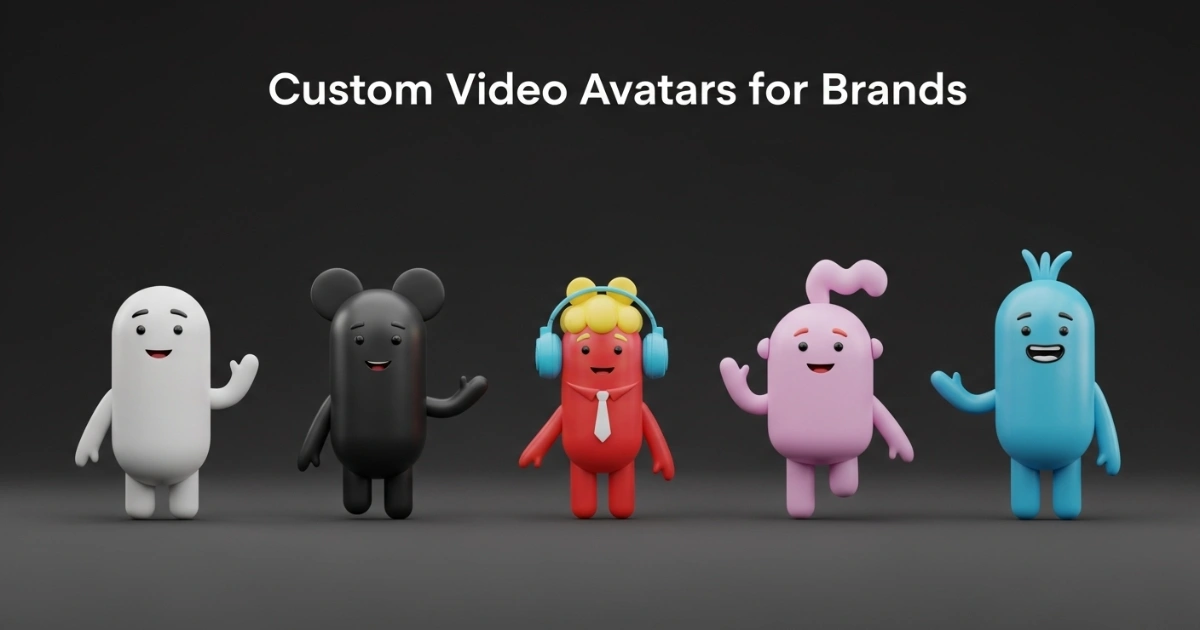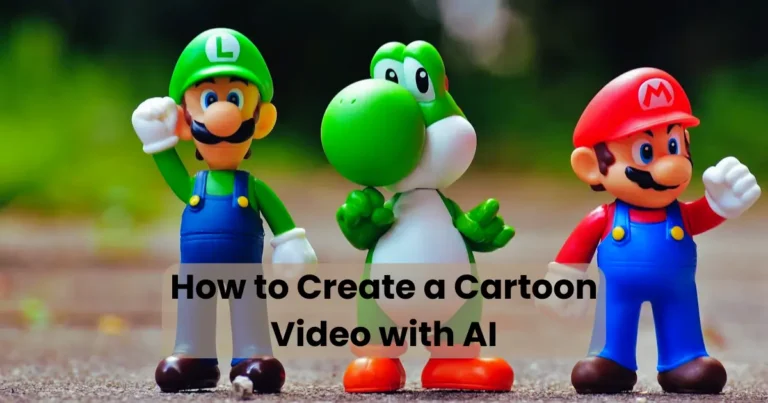Custom Video Avatars for Brands: Boost Engagement

Contents
- 1 What Are Custom Video Avatars for Brands?
- 2 Why Custom Video Avatars Are Essential for Modern Brands
- 3 How to Create Custom Video Avatars for Brands
- 4 Real-World Examples of Custom Video Avatars for Brands
- 5 Challenges and Solutions in Using Custom Video Avatars
- 6 The Future of Custom Video Avatars for Brands
Custom video avatars for brands are transforming how businesses connect with their audiences in the digital age. These dynamic, personalized digital representations combine creativity and technology to deliver engaging, memorable, and authentic brand experiences. As consumers increasingly demand interactive and relatable content, brands are turning to custom video avatars to stand out in crowded markets. This article explores the power of custom video avatars, their benefits, creation process, and real-world applications, offering actionable insights to help your brand leverage this innovative tool for maximum impact.
In today’s fast-paced digital landscape, capturing attention is harder than ever. With attention spans shrinking and competition growing, brands must find innovative ways to engage their audiences effectively. Custom video avatars provide a unique solution, blending human-like interaction with the scalability of digital tools. By incorporating these avatars into marketing strategies, businesses can create immersive experiences that resonate with customers, foster trust, and drive conversions. Let’s dive into why custom video avatars for brands are a game-changer and how you can harness their potential.
What Are Custom Video Avatars for Brands?
Custom video avatars for brands are digital characters or animated personas tailored to represent a company’s identity, values, and messaging. Unlike generic avatars, these are designed to align with a brand’s aesthetic, tone, and target audience. They can appear in various forms, such as animated characters, lifelike virtual humans, or stylized figures, and are used in videos, social media, websites, and customer service platforms.
These avatars are powered by advanced technologies like artificial intelligence (AI), motion capture, and 3D animation, enabling them to deliver dynamic, interactive content. For instance, a custom video avatar might greet website visitors, guide users through a product demo, or star in a social media campaign. By embodying the brand’s personality, these avatars create a consistent and engaging presence across multiple channels.
Moreover, custom video avatars for brands offer versatility. They can be programmed to speak multiple languages, adapt to different cultural contexts, or even respond to user inputs in real time. This adaptability makes them ideal for global brands aiming to connect with diverse audiences. As a result, businesses can deliver personalized experiences at scale, enhancing customer satisfaction and loyalty.
Why Custom Video Avatars Are Essential for Modern Brands
The rise of digital marketing has shifted consumer expectations. Today’s audiences crave authenticity, interactivity, and personalization. Custom video avatars for brands meet these demands by offering several key benefits. Let’s explore why they’re becoming indispensable for businesses.

1. Enhanced Engagement and Interactivity
Custom video avatars capture attention more effectively than static images or text. Their human-like appearance and behavior make them relatable, encouraging users to engage with content longer. For example, a study by Wyzowl found that 84% of consumers say videos convince them to buy a product or service. By incorporating custom video avatars, brands can make their videos more compelling, increasing dwell time and interaction rates.
Additionally, avatars can be interactive, responding to user queries or guiding them through a website. This interactivity creates a sense of connection, making customers feel valued and understood. Consequently, brands that use custom video avatars often see higher engagement metrics, such as click-through rates and social shares.
2. Consistent Brand Representation
Maintaining a consistent brand image across platforms is crucial for building trust. Custom video avatars for brands ensure that every interaction reflects the company’s values and personality. Unlike human spokespeople, avatars don’t age, change appearance, or risk off-brand behavior, providing a reliable and controlled representation.
For instance, a luxury fashion brand might create a sleek, sophisticated avatar to embody its elegance, while a tech startup could design a quirky, animated character to convey innovation. By tailoring the avatar’s appearance, voice, and tone, brands can reinforce their identity in every customer touchpoint.
3. Cost-Effective Scalability
Producing high-quality video content with human actors can be expensive and time-consuming. Custom video avatars for brands offer a cost-effective alternative, allowing businesses to create reusable, scalable content. Once designed, an avatar can be used across multiple campaigns, platforms, and languages without additional production costs.
Moreover, avatars eliminate the need for reshoots or scheduling conflicts, making them ideal for brands with frequent content needs. Over time, this scalability translates into significant savings, enabling businesses to allocate budgets to other marketing efforts.
4. Personalization and Global Reach
Personalization is a cornerstone of modern marketing. Custom video avatars for brands can be customized to resonate with specific demographics, cultures, or regions. For example, a global e-commerce brand might create avatars that speak local languages or reflect cultural nuances, ensuring relevance for diverse audiences.
AI-powered avatars can also deliver personalized content based on user data, such as preferences or browsing history. This level of customization enhances the customer experience, fostering loyalty and driving conversions. In fact, a report by Epsilon found that 80% of consumers are more likely to make a purchase when brands offer personalized experiences.
How to Create Custom Video Avatars for Brands
Creating a custom video avatar requires a strategic approach to ensure it aligns with your brand and resonates with your audience. Here’s a step-by-step guide to help you get started.

Step 1: Define Your Brand’s Goals and Audience
Before designing an avatar, clarify your objectives. Are you aiming to increase website engagement, boost social media presence, or enhance customer support? Understanding your goals will guide the avatar’s design and functionality.
Next, analyze your target audience. Consider their demographics, preferences, and pain points. For example, a youthful, tech-savvy audience might respond well to a trendy, animated avatar, while a professional audience may prefer a polished, lifelike figure. This insight ensures your avatar connects with the right people.
Step 2: Choose the Right Technology
Several technologies can bring your custom video avatar to life. Popular options include:
- 3D Animation: Ideal for creating stylized or cartoon-like avatars with high visual appeal.
- AI and Machine Learning: Enables avatars to interact dynamically, such as answering questions or adapting to user inputs.
- Motion Capture: Produces realistic human-like avatars by capturing real actors’ movements.
- Text-to-Speech: Allows avatars to deliver natural-sounding dialogue in multiple languages.
Select a technology that aligns with your budget, goals, and desired level of interactivity. For instance, AI-powered avatars are perfect for real-time customer service, while 3D animation suits branded video content.
Step 3: Design the Avatar
The design process is where your brand’s personality comes to life. Work with a skilled designer or animation studio to create an avatar that reflects your brand’s aesthetic. Key elements to consider include:
- Appearance: Choose colors, clothing, and features that align with your brand identity.
- Voice and Tone: Select a voice that matches your brand’s tone, whether professional, friendly, or playful.
- Animations: Incorporate gestures and expressions to make the avatar engaging and relatable.
For example, a fitness brand might design an energetic, athletic avatar, while a financial institution could opt for a professional, trustworthy figure. Ensure the design is consistent with your brand guidelines to maintain coherence.
Step 4: Integrate Across Platforms
Once created, integrate your custom video avatar into your marketing channels. Common applications include:
- Websites: Use avatars to welcome visitors, guide navigation, or explain products.
- Social Media: Feature avatars in video content, stories, or live streams to boost engagement.
- Customer Service: Deploy AI-powered avatars as virtual assistants to answer queries.
- Advertising: Incorporate avatars into video ads for a memorable, brand-centric approach.
Test the avatar’s performance across platforms to ensure compatibility and effectiveness. Use analytics to track engagement metrics and refine the avatar’s role as needed.
Step 5: Measure and Optimize
To maximize the impact of your custom video avatar, monitor its performance using key performance indicators (KPIs) like engagement rates, conversion rates, and customer feedback. A/B testing can help determine which avatar designs or interactions resonate most with your audience.
Continuously optimize the avatar based on data insights. For example, if users respond better to a specific tone or animation style, adjust the avatar accordingly. This iterative approach ensures your avatar remains relevant and effective over time.
Real-World Examples of Custom Video Avatars for Brands
To illustrate the power of custom video avatars, let’s look at some successful examples from leading brands.

Example 1: Samsung’s Virtual Assistant
Samsung introduced a virtual assistant named Sam, a 3D-animated character designed to engage users across digital platforms. Sam’s friendly demeanor and sleek design align with Samsung’s innovative brand image, making it a hit on social media. By using Sam in product demos and tutorials, Samsung increased user engagement and strengthened its brand presence.
Example 2: KFC’s Virtual Colonel Sanders
KFC brought its iconic founder, Colonel Sanders, to life as a custom video avatar. The animated Colonel appears in ads, social media campaigns, and interactive experiences, delivering a nostalgic yet modern brand experience. This avatar has helped KFC connect with younger audiences while reinforcing its heritage.
Example 3: L’Oréal’s Virtual Makeup Advisor
L’Oréal uses AI-powered avatars to provide virtual makeup consultations on its website and app. These avatars guide users through product selection, offer personalized recommendations, and demonstrate application techniques. By blending interactivity with personalization, L’Oréal has boosted customer satisfaction and online sales.
These examples highlight how custom video avatars for brands can drive engagement, enhance brand identity, and deliver measurable results. By tailoring avatars to specific goals and audiences, businesses can create memorable experiences that set them apart.
Challenges and Solutions in Using Custom Video Avatars
While custom video avatars offer numerous benefits, they come with challenges. Here’s how to address common obstacles:

Challenge 1: High Initial Costs
Creating a high-quality avatar can be expensive, especially for small businesses. Solution: Start with a simpler 2D or animated avatar to test its impact before investing in advanced 3D or AI-powered designs. Many platforms offer affordable avatar creation tools for beginners.
Challenge 2: Technical Complexity
Developing and integrating avatars requires technical expertise. Solution: Partner with a reputable animation studio or use user-friendly platforms like Synthesia or VUP that simplify the process. These tools provide templates and drag-and-drop interfaces for non-technical users.
Challenge 3: Audience Reception
Some audiences may prefer human interaction over avatars. Solution: Use avatars in contexts where they add value, such as tutorials or social media, while maintaining human touchpoints for sensitive interactions like customer complaints. Conduct surveys to gauge audience preferences and adjust accordingly.
By proactively addressing these challenges, brands can maximize the effectiveness of their custom video avatars and avoid common pitfalls.
The Future of Custom Video Avatars for Brands
As technology advances, the potential for custom video avatars continues to grow. Emerging trends include:

- AI-Driven Personalization: Avatars will become more sophisticated, using AI to deliver hyper-personalized experiences based on real-time data.
- Augmented Reality (AR) Integration: AR-powered avatars will enable immersive experiences, such as virtual try-ons or interactive store tours.
- Metaverse Applications: As brands explore the metaverse, custom video avatars will serve as digital ambassadors, representing businesses in virtual worlds.
These advancements will make custom video avatars for brands even more powerful, enabling businesses to stay ahead in the competitive digital landscape. By adopting this technology early, brands can position themselves as innovators and build stronger connections with their audiences.
Conclusion
Custom video avatars for brands are more than just a trend—they’re a strategic tool for enhancing engagement, building trust, and scaling marketing efforts. By combining creativity, technology, and personalization, these avatars enable businesses to deliver memorable experiences that resonate with modern audiences. From increasing dwell time to reinforcing brand identity, the benefits are clear.
To succeed with custom video avatars, brands must align their design with clear goals, choose the right technology, and continuously optimize based on performance data. As seen in examples like Samsung, KFC, and L’Oréal, avatars can transform how businesses connect with customers, driving loyalty and growth.
Ready to elevate your brand’s digital presence? Start exploring custom video avatars today and unlock their potential to captivate your audience. Whether you’re a small business or a global enterprise, this innovative tool can help you stand out and thrive in the digital age.






